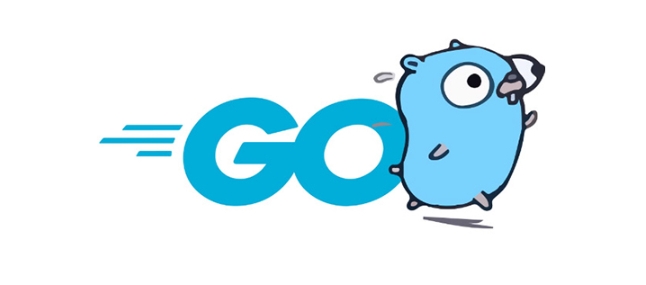The init() function is used in Go language to initialize package-level variables and set the running environment. Its execution rules include: 1. Each package can define multiple init() functions and execute them in declaration order; 2. The execution order of init() in different files is uncertain; 3. The initialization of package-level variables is preceded by init(). Typical uses such as registering components, loading configurations, binding hooks, etc., such as automatic registration of database drivers. When using it, you should pay attention to avoid problems such as excessive side effects, circular dependence, debugging difficulties and inconsistent testing behavior. It is recommended to keep init() light and have no side effects.

In Go, init() is a special function that is automatically executed when the program starts, and is used to initialize package-level variables or set the running environment. It is not called explicitly like a normal function, but is automatically called by the Go runtime system. Understanding the role and usage of init() is very helpful for organizing code logic and ensuring that dependencies are initialized correctly.

Basic rules of init() function
Each Go package can define multiple init() functions, which are executed in order of declaration. But it should be noted that the execution order of init() in different files is uncertain , so do not rely on this order to perform critical initialization operations.
- Each package can have multiple
init()functions - Package-level variable initialization is performed before
init() - Multiple
init()in the same file are executed in the order of occurrence - The execution order of
init()between different files is not guaranteed
For example:

// file1.go
var a = initA()
func initA() int {
fmt.Println("Initializing A")
return 0
}
func init() {
fmt.Println("File1 init 1")
}
func init() {
fmt.Println("File1 init 2")
}The output is roughly as follows (assuming this is the first file to be processed):
Initializing A File1 init 1 File1 init 2
Typical uses of init()
init() is often used to do some initialization work that cannot be completed in the variable declaration stage, such as registering certain components, loading configurations, checking the running environment, etc.

Common scenarios include:
- Register a database driver
- Initialize the global variable structure
- Set default values ??or bind hook functions
- Load configuration files into memory
For example, many database libraries will automatically register themselves through init() , so that users only need to import packages to use:
func init() {
database.Register("mysql", mysqlDriver{})
}In this way, as long as someone imports this package, the MySQL driver will be automatically registered into the system.
What to pay attention to when using init()
Although init() is convenient, it also has some easy places to get stuck, especially in large projects.
- Avoid excessive side effects : because init() is executed when a package is imported, if it does too much (such as connecting to the network), it will make the import "expensive".
- Avoid circular dependencies : If two packages depend on each other and each has complex
init(), it may result in deadlocks or initialization failures. - Debugging difficulty : Errors in init() are not easy to catch and track, so it is recommended to add logs or panic as soon as possible.
- The behavior may be inconsistent during testing : packages imported in unit tests will also trigger init(), which may cause the behavior of the test environment to be inconsistent with the production environment.
So it is recommended to use init() only if necessary, and try to keep it lightweight and side effects free.
Basically that's it. init() is a powerful but cautious tool that needs to be used. Proper use can help you write clearer and more modular Go programs.
The above is the detailed content of Go init() function explained. For more information, please follow other related articles on the PHP Chinese website!

Hot AI Tools

Undress AI Tool
Undress images for free

Undresser.AI Undress
AI-powered app for creating realistic nude photos

AI Clothes Remover
Online AI tool for removing clothes from photos.

Clothoff.io
AI clothes remover

Video Face Swap
Swap faces in any video effortlessly with our completely free AI face swap tool!

Hot Article

Hot Tools

Notepad++7.3.1
Easy-to-use and free code editor

SublimeText3 Chinese version
Chinese version, very easy to use

Zend Studio 13.0.1
Powerful PHP integrated development environment

Dreamweaver CS6
Visual web development tools

SublimeText3 Mac version
God-level code editing software (SublimeText3)

Hot Topics
 What are the implications of Go's static linking by default?
Jun 19, 2025 am 01:08 AM
What are the implications of Go's static linking by default?
Jun 19, 2025 am 01:08 AM
Go compiles the program into a standalone binary by default, the main reason is static linking. 1. Simpler deployment: no additional installation of dependency libraries, can be run directly across Linux distributions; 2. Larger binary size: Including all dependencies causes file size to increase, but can be optimized through building flags or compression tools; 3. Higher predictability and security: avoid risks brought about by changes in external library versions and enhance stability; 4. Limited operation flexibility: cannot hot update of shared libraries, and recompile and deployment are required to fix dependency vulnerabilities. These features make Go suitable for CLI tools, microservices and other scenarios, but trade-offs are needed in environments where storage is restricted or relies on centralized management.
 How do I create a buffered channel in Go? (e.g., make(chan int, 10))
Jun 20, 2025 am 01:07 AM
How do I create a buffered channel in Go? (e.g., make(chan int, 10))
Jun 20, 2025 am 01:07 AM
To create a buffer channel in Go, just specify the capacity parameters in the make function. The buffer channel allows the sending operation to temporarily store data when there is no receiver, as long as the specified capacity is not exceeded. For example, ch:=make(chanint,10) creates a buffer channel that can store up to 10 integer values; unlike unbuffered channels, data will not be blocked immediately when sending, but the data will be temporarily stored in the buffer until it is taken away by the receiver; when using it, please note: 1. The capacity setting should be reasonable to avoid memory waste or frequent blocking; 2. The buffer needs to prevent memory problems from being accumulated indefinitely in the buffer; 3. The signal can be passed by the chanstruct{} type to save resources; common scenarios include controlling the number of concurrency, producer-consumer models and differentiation
 How can you use Go for system programming tasks?
Jun 19, 2025 am 01:10 AM
How can you use Go for system programming tasks?
Jun 19, 2025 am 01:10 AM
Go is ideal for system programming because it combines the performance of compiled languages ??such as C with the ease of use and security of modern languages. 1. In terms of file and directory operations, Go's os package supports creation, deletion, renaming and checking whether files and directories exist. Use os.ReadFile to read the entire file in one line of code, which is suitable for writing backup scripts or log processing tools; 2. In terms of process management, the exec.Command function of the os/exec package can execute external commands, capture output, set environment variables, redirect input and output flows, and control process life cycles, which are suitable for automation tools and deployment scripts; 3. In terms of network and concurrency, the net package supports TCP/UDP programming, DNS query and original sets.
 How does Go ensure memory safety without manual memory management like in C?
Jun 19, 2025 am 01:11 AM
How does Go ensure memory safety without manual memory management like in C?
Jun 19, 2025 am 01:11 AM
Goensuresmemorysafetywithoutmanualmanagementthroughautomaticgarbagecollection,nopointerarithmetic,safeconcurrency,andruntimechecks.First,Go’sgarbagecollectorautomaticallyreclaimsunusedmemory,preventingleaksanddanglingpointers.Second,itdisallowspointe
 How do I call a method on a struct instance in Go?
Jun 24, 2025 pm 03:17 PM
How do I call a method on a struct instance in Go?
Jun 24, 2025 pm 03:17 PM
In Go language, calling a structure method requires first defining the structure and the method that binds the receiver, and accessing it using a point number. After defining the structure Rectangle, the method can be declared through the value receiver or the pointer receiver; 1. Use the value receiver such as func(rRectangle)Area()int and directly call it through rect.Area(); 2. If you need to modify the structure, use the pointer receiver such as func(r*Rectangle)SetWidth(...), and Go will automatically handle the conversion of pointers and values; 3. When embedding the structure, the method of embedded structure will be improved, and it can be called directly through the outer structure; 4. Go does not need to force use getter/setter,
 What are interfaces in Go, and how do I define them?
Jun 22, 2025 pm 03:41 PM
What are interfaces in Go, and how do I define them?
Jun 22, 2025 pm 03:41 PM
In Go, an interface is a type that defines behavior without specifying implementation. An interface consists of method signatures, and any type that implements these methods automatically satisfy the interface. For example, if you define a Speaker interface that contains the Speak() method, all types that implement the method can be considered Speaker. Interfaces are suitable for writing common functions, abstract implementation details, and using mock objects in testing. Defining an interface uses the interface keyword and lists method signatures, without explicitly declaring the type to implement the interface. Common use cases include logs, formatting, abstractions of different databases or services, and notification systems. For example, both Dog and Robot types can implement Speak methods and pass them to the same Anno
 How do I use the io package to work with input and output streams in Go?
Jun 20, 2025 am 11:25 AM
How do I use the io package to work with input and output streams in Go?
Jun 20, 2025 am 11:25 AM
TheGoiopackageprovidesinterfaceslikeReaderandWritertohandleI/Ooperationsuniformlyacrosssources.1.io.Reader'sReadmethodenablesreadingfromvarioussourcessuchasfilesorHTTPresponses.2.io.Writer'sWritemethodfacilitateswritingtodestinationslikestandardoutpu
 How do I use string functions from the strings package in Go? (e.g., len(), strings.Contains(), strings.Index(), strings.ReplaceAll())
Jun 20, 2025 am 01:06 AM
How do I use string functions from the strings package in Go? (e.g., len(), strings.Contains(), strings.Index(), strings.ReplaceAll())
Jun 20, 2025 am 01:06 AM
In Go language, string operations are mainly implemented through strings package and built-in functions. 1.strings.Contains() is used to determine whether a string contains a substring and returns a Boolean value; 2.strings.Index() can find the location where the substring appears for the first time, and if it does not exist, it returns -1; 3.strings.ReplaceAll() can replace all matching substrings, and can also control the number of replacements through strings.Replace(); 4.len() function is used to obtain the length of the bytes of the string, but when processing Unicode, you need to pay attention to the difference between characters and bytes. These functions are often used in scenarios such as data filtering, text parsing, and string processing.






